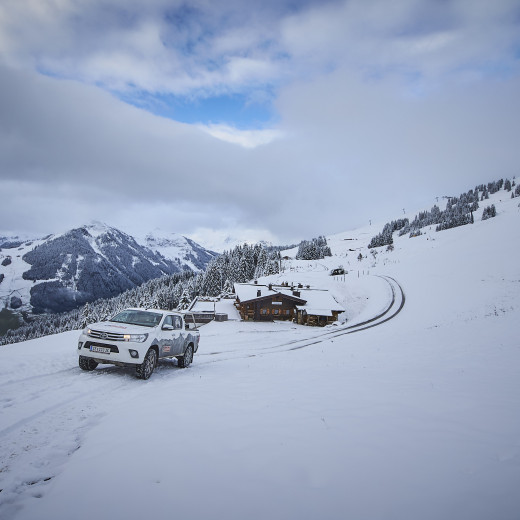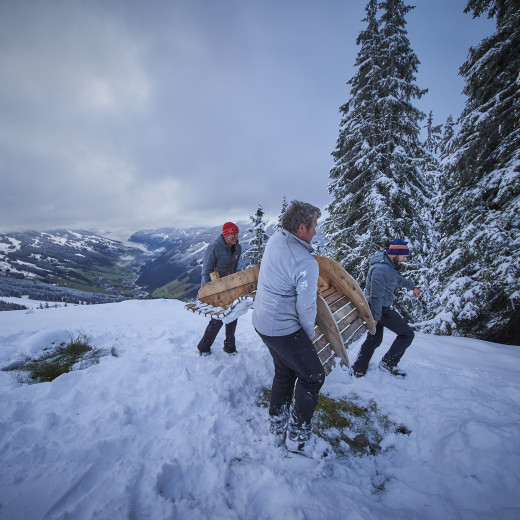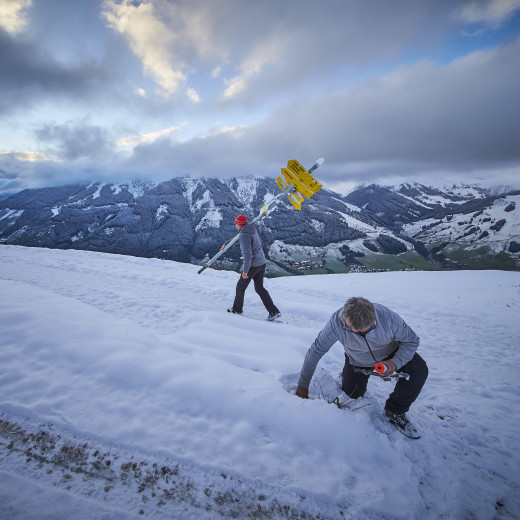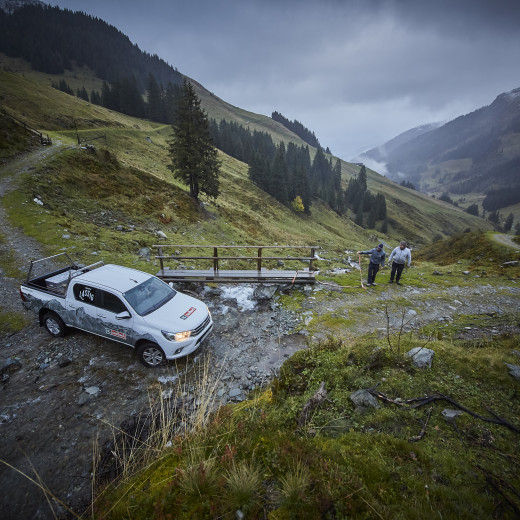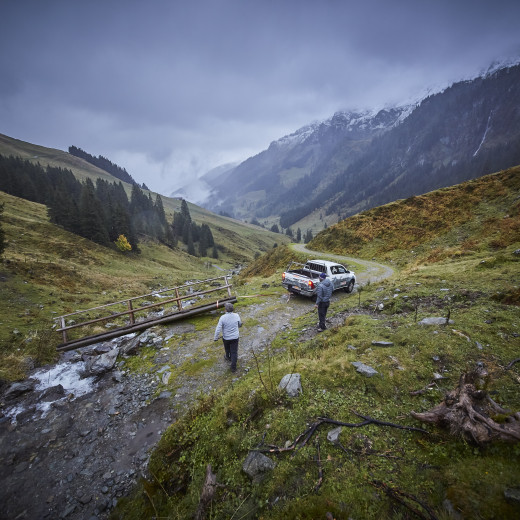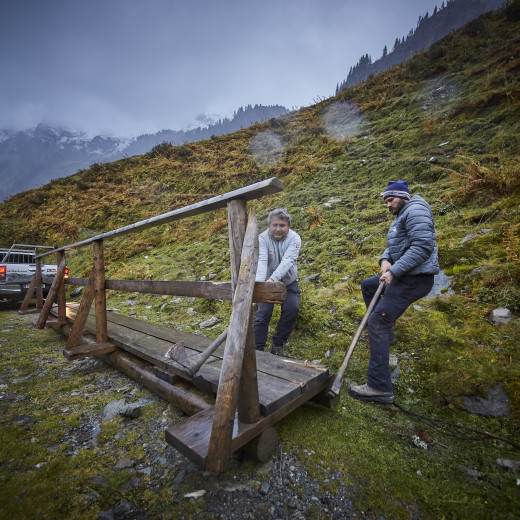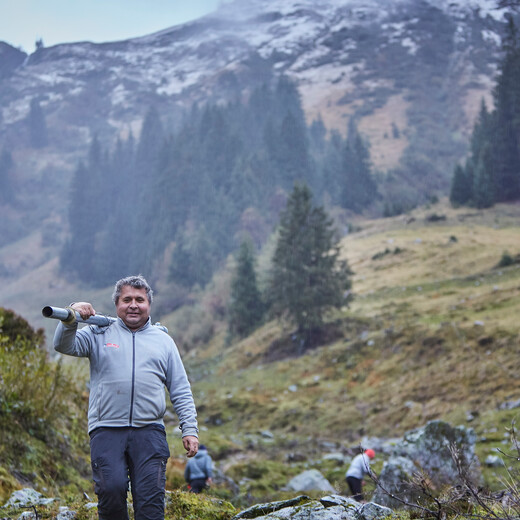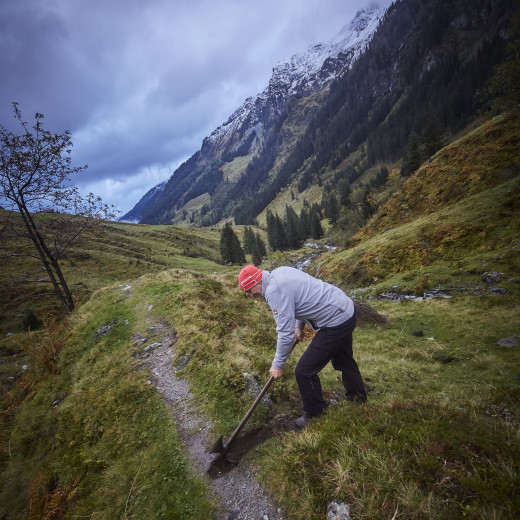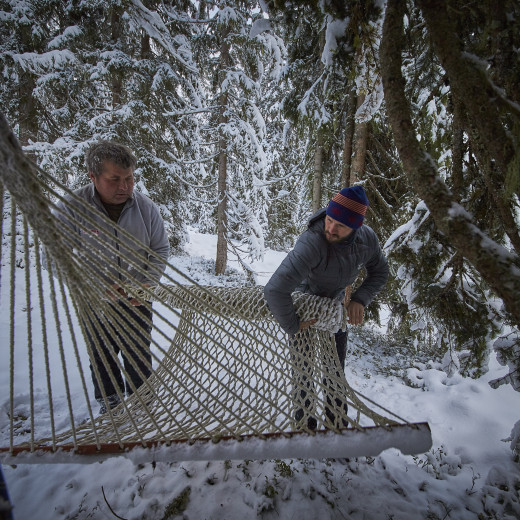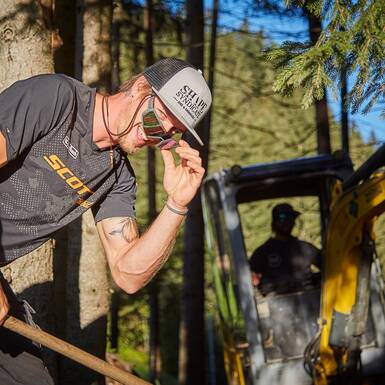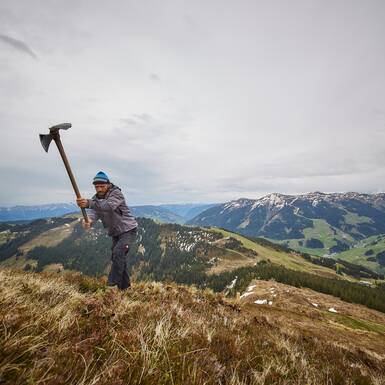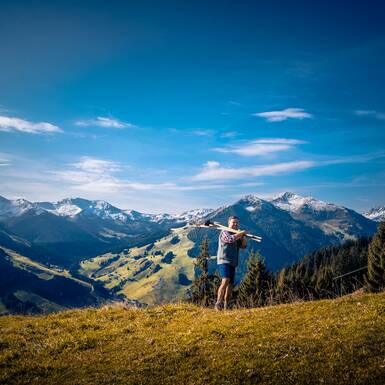- Backstage
Preparing the hiking trails for winter
The summer is over and winter is just around the corner. The between season grants our trail makers only a short timeframe to complete important work before the onset of winter. Hans Eder told me what is currently on his 'to do list'.
The summer season of 2020 is over. What is on your résumé?
The feelings I had in spring came true. The summer of 2020 went very well despite the difficult circumstances. We were able to welcome numerous guests who spent the most beautiful time of the year in our mountains. It was a very busy summer for us trail makers. In addition to the ongoing work for the maintenance and improvement of hiking trails and infrastructure, the cancellation of several major events freed up time this summer to put long standing ideas and planned projects into practice.
For example, the new high Alpine pasture trail and a new path from the top of the Kohlmais to Schönleiten. As a result, hikers and bikers are now on separate paths in this highly frequented area. The feedback from guests and locals for the new paths is very positive, which of course makes me very happy.
Which tasks need to be completed before the winter?
There are basically two areas: On the one hand, there are those that are also used for tourism in winter or have infrastructural significance. On the other hand, there are those that are also used for tourism in winter or have an infrastructural importance, for example forest paths that can also be used for hiking in winter, or terrain sections on which ski slopes are located. However, we also look after infrastructure away from civilisation, i.e. in areas where foxes and rabbits say "good night" in winter.
Wherever there are ski slopes or snow clearing machines in winter, benches, signposts, information signs and pasture gates must be dismantled and removed. Signposts and benches in the valley area - for example at the end of the valley promenade - are fitted with snow poles and thus made visible to the drivers of snow clearing vehicles.
Experience has shown that in remote areas, strong natural influences on our infrastructure have a heavy impact. Snow pressure, avalanches or winter storms would partially destroy bridges, crossings and information boards. Therefore the majority of these elements are stored safely. Of course we do not forget the popular hammocks of the forest wellness trail. Basically: All work that we can do before winter saves us time in spring. In order to keep erosion to a minimum, hiking trails are crossed with water channels (drains) so that meltwater does not run over the path but is diverted away from the path.
What do you actually do throughout the winter?
In winter 2020/21 the range of offers for winter hikers will be greatly expanded. There will be guided hikes twice a day free of charge, which I will be in charge of together with a hiking guide colleague Hans Adelsberger.
Every minute we have free, we spend in our workshop carrying out maintenance work. For example, benches are repaired, signposts are pre-assembled, new pasture gates are created, and marker poles are made and painted. Besides the manual work, I also spend time in front of my laptop and revise hikes in our tour portal.
When the work is done, you can find me taking an extensive ski tour at the end of the Hinterglemm valley ;)

